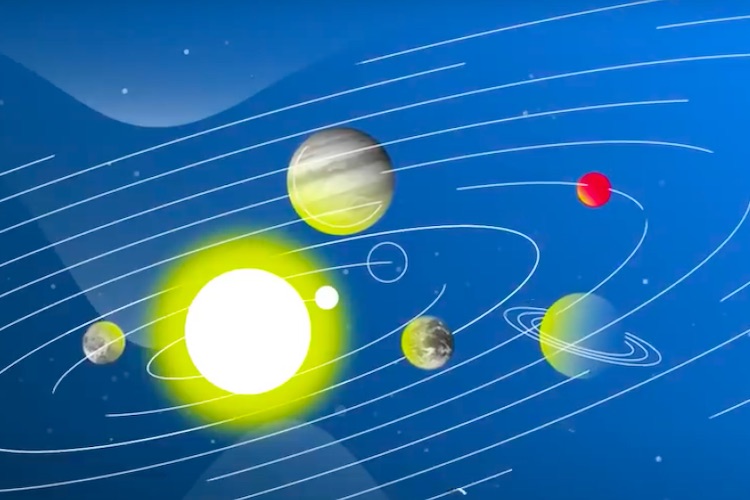Dark Matter
Astrophysicist Simon White on dark matter, its role in explaining the formation of the universe, and the chall...

On June 23, 2015, Nature Communications published a paper titled “Using the transit of Venus to probe the upper planetary atmosphere” about the original way to use the transit of Venus to learn more about the planet. We have asked one of the authors of this research, Prof. Fabio Reale, to comment on this work.
When a planet transits in front of a star, the light from the star decreases a bit. If we detect this dip, we capture the planet. The atmospheres of far planets are even more difficult to detect. Can we study this in the solar system? Venus is the largest planet that we can see to transit from Earth. The transit is a very rare event, about twice in a century. The latest transit of 2012 has been special because it has been observed very well from space telescopes, in colors not visible from the Earth surface, and, in particular, in the UV and X-rays.
Here in Palermo we have a long experience in the analysis and modeling of X-ray observations of the solar corona, the hot outer atmosphere of our star. The work dates back to the 70’s, when Prof. Giuseppe Vaiana pioneered observations from the Skylab mission. The interest in exoplanets is quite recent. Venus has been our first approach to the solar system outside of the Sun. We first tried to use the transit of Venus as a template of transit of an exoplanet, but Venus is too small to leave a signature in the bumpy light curve of the X-ray Sun. Then we had the idea to use the real advantage of observing the solar system: we see the disk of the planet, so we can measure the size directly. The other step was to use concentric annuli to improve our precision, and it was more and more exciting to find that the result did not change after severe testing.
We found an original way to use the transit of Venus. It was the first time that there was this comparison between observations in different invisible colors. Venus is mysterious because of its impenetrable clouds, but we managed to detect even higher layers above the clouds with remote sensing. The atmosphere that we measured is 150 km above the rocky surface of Venus. This is more than 2% of the radius of the planet, and in the future it may not be too difficult to sense this difference in extrasolar planets. This may therefore become an easy way to detect the atmospheres of exoplanets. Regarding the transit of Venus, we will have to wait for more than a century to have fresh new data from the next one and find new ways to use them.

Astrophysicist Simon White on dark matter, its role in explaining the formation of the universe, and the chall...

Cloud Technology Researcher José Luis Vázquez-Poletti on data storage in computing clouds, creating new virtua...

Scientists have used infrared camera to observe a gas giant planet that is still in the process of formation